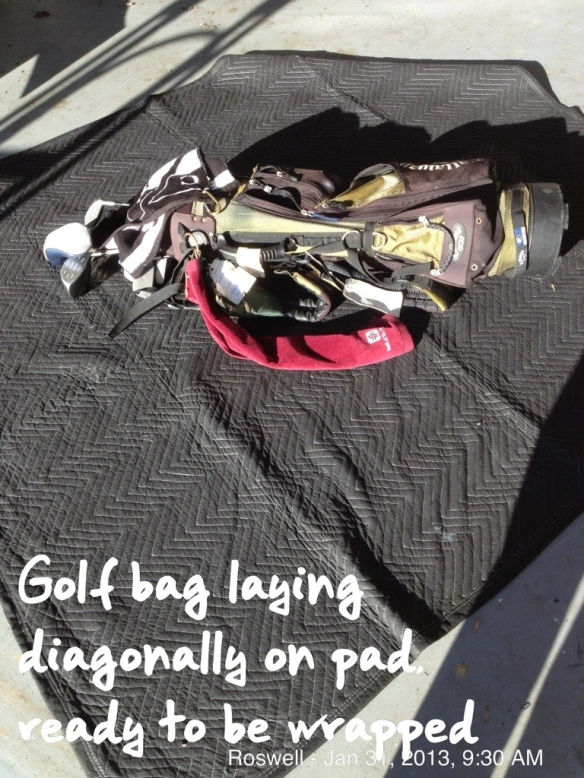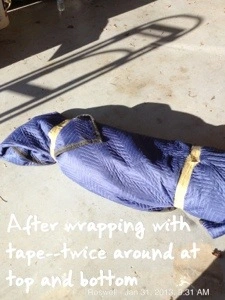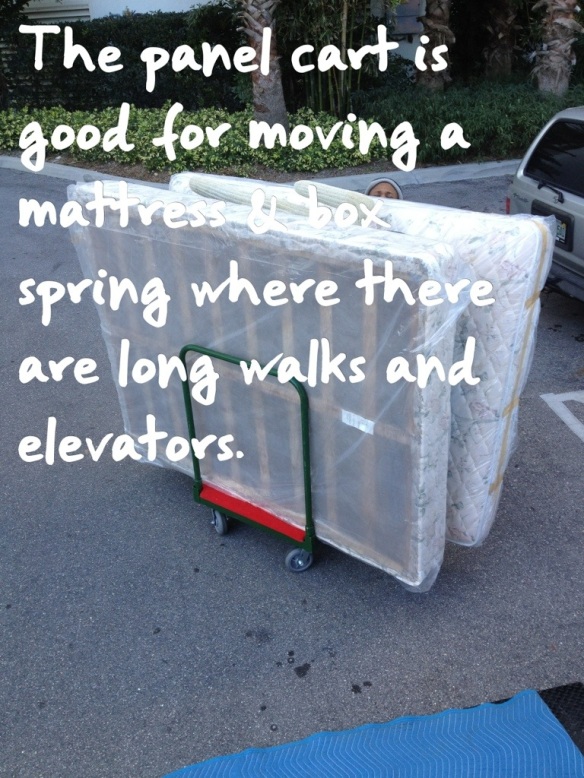
This box shows the problem. A leaky, soapy mess! Often home cleaning fluids will leak right through the box and into the load. Imagine the consequences if the leaky box happens to be sitting on top of say, a leather sofa standing on end! With this particular box, we fortunately identified it as leaking and put it outside in the straw, so it could harmlessly drain. The box was meant to go in the customer’s new basement, and it would not have been nice if it had leaked all over their new basement floor. But the box traveled in the load to the new destination. So it was only pure luck that the box didn’t leak during transit and cause significant damage!
For interstate moves, there is an outright ban on putting cleaning fluids in the load. And it is usually easy for the customer to understand. Bottles of cleaning fluid cannot be bouncing around somewhere in the load for hundreds or thousands of miles. But for local moves it is trickier, since the customer will not think twice about putting cleaning supplies on their truck when doing a Do-It-Yourself-Move in say, a U-Haul. When a Mover tells the Customer the cleaning supplies cannot go on the truck, even when the truck is only going a few miles, the Customer may not be happy. The Customer may not have room in his car trunk, and may not want to make an additional trip back just to get the cleaning supplies!
Since I am always trying to please the customer if-at-all-possible, I have struggled to find a safe way to move their cleaning supplies on the back of the truck. My imperfect algorithm is as follows:
When the Loader sees a box of cleaning supplies approaching the truck–he should immediately remove that box and put it outside and beside the truck. You may put it with other items in the category of “Going-At-The-End-of-The-Truck.” Other items in this category are live plants (also an absolute no-no on an interstate move, but you can get by with moving them on a local move). With the cleaning supplies outside the truck, you can also watch the box to see if it is already leaking, much like you might watch a refrigerator or washing machine for water leaks. This rule assumes YOU CAN IDENTIFY THE BOX AS CONTAINING CLEANING SUPPLIES. This will only happen if
The box was properly labeled. In this picture the box is MOST DEFINITELY NOT LABELED PROPERLY! “Laundry Room” does not tell you there are messy cleaning supplies inside!
When Labeling the box, put something like “* * DANGER — CLEANING SUPPLIES — PUT AT END OF TRUCK * *”
IN CONCLUSION: A purist Mover/Loader will make it easy on himself and just ban the cleaning supplies on the truck. But if he decides to risk it, he must keep the cleaning supplies box at the end of the truck, sitting on the floor by itself to minimize leaking throughout the load.








